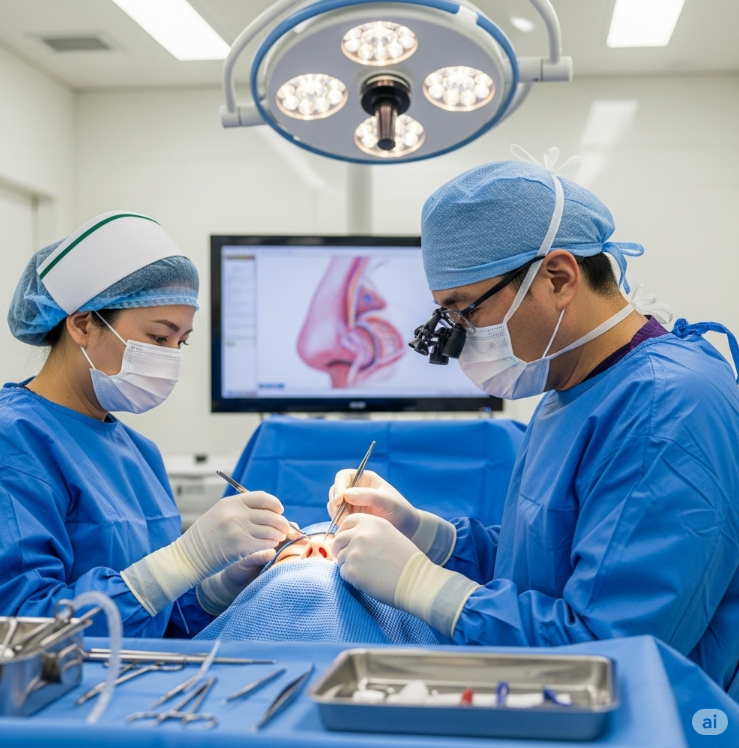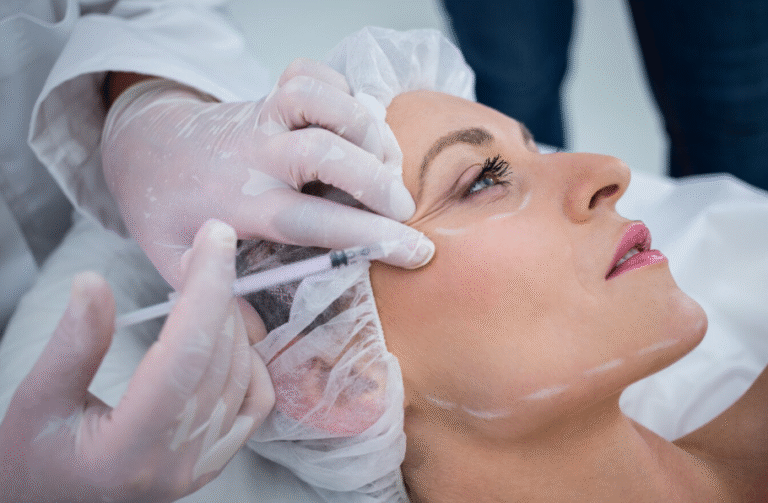Treatment Overview
Ethnic Rhinoplasty is a specialized form of nose surgery designed to enhance and refine nasal features while preserving the unique cultural and ethnic identity of the patient. Unlike standard rhinoplasty, which often follows Western aesthetic ideals, ethnic rhinoplasty focuses on creating harmony with each individual’s natural features—whether African, Asian, Middle Eastern, or Latin.
In Korea, surgeons are globally recognized for their expertise in subtle, natural-looking transformations that respect ethnic characteristics. Using advanced surgical techniques and personalized planning, Korean clinics achieve refined results while maintaining the cultural authenticity of the patient’s appearance.
Purpose & Benefits
The main purpose of ethnic rhinoplasty is to enhance nasal proportions while preserving ethnic uniqueness. Benefits include:
- Creates facial harmony without erasing ethnic identity.
- Improves nasal bridge height, definition, or symmetry.
- Refines nostril width, bulbous tip, or dorsal hump.
- Enhances overall balance between nose, lips, and chin.
- Provides natural outcomes tailored to each ethnic group’s unique anatomy.
- Boosts self-confidence with results that look authentic and not “overdone.”
Ideal Candidates
Ethnic rhinoplasty in Korea is suitable for individuals who:
- Want to refine their nasal structure without losing ethnic identity.
- Have wide nostrils, low nasal bridges, or bulbous nasal tips.
- Desire improved balance between facial features.
- Seek natural, scar-minimized results.
- Are in good health and have realistic expectations.
Possible Risks & Complications
Though considered safe in expert hands, possible risks include:
- Swelling and bruising (especially common in thicker skin types).
- Asymmetry or uneven healing.
- Over-reduction or loss of ethnic identity (rare in Korea due to expert precision).
- Breathing issues if too much structure is altered.
- Need for revision surgery in rare cases.
Surgical Techniques Used
Korean surgeons tailor ethnic rhinoplasty using advanced and ethnicity-specific approaches:
- Augmentation Rhinoplasty (Silicone or Gore-Tex implants): To enhance a low nasal bridge (common in Asian rhinoplasty).
- Autologous Cartilage Grafts: Ear, rib, or septal cartilage used to refine tip projection and definition.
- Alar Base Reduction: For patients with wide or flared nostrils.
- Tip Refinement Techniques: Dome-binding sutures, shield grafts, or transdomal sutures for better definition.
- Bridge Narrowing or Widening: Adjusting the nasal bones for improved proportion.
- Scar-Minimizing Internal Incisions: Hidden approaches ensure discreet outcomes.
Recovery & Aftercare
- Swelling & Bruising: Typically resolves within 2–3 weeks, with continued refinement for several months.
- Stitches: Usually removed in 5–7 days.
- Downtime: Patients can return to light activities within 1–2 weeks.
- Final Results: Visible after 3 months, with full refinement up to 1 year.
- Korean Aftercare: Clinics provide swelling reduction therapy, scar care, LED light therapy, and follow-up consultations to ensure smooth recovery.
Results & Longevity
Ethnic rhinoplasty in Korea produces long-lasting, natural results that honor each patient’s heritage. When performed by experienced surgeons, results remain stable and maintain nasal function. Patients enjoy improved facial harmony without losing their ethnic identity, making this procedure a preferred choice among international patients seeking authenticity.
Treatment Process in Korea
Korea has become a global hub for ethnic rhinoplasty due to its surgeons’ ability to balance aesthetic enhancement with ethnic preservation.
1. Consultation
- Surgeons perform 3D imaging and morphing to design results that suit the patient’s ethnicity and facial harmony.
- Patients discuss their goals, focusing on balance rather than complete transformation.
2. Pre-Surgery Care
- Health evaluation and nasal structure analysis.
- Surgical planning customized for each ethnicity.
3. Surgery
- Performed under local anesthesia with sedation or general anesthesia.
- Takes about 2–3 hours, depending on the complexity.
- Techniques vary depending on ethnicity (e.g., augmentation for Asian noses, alar reduction for African noses, tip refinement for Middle Eastern noses).
4. Immediate Post-Surgery Care
- Monitoring in recovery rooms for several hours.
- Nasal splints applied for protection.
5. Follow-Up & Aftercare
- Clinics provide anti-swelling care, scar treatment, and personalized follow-up visits.
- International patients benefit from translator services, medical tourism support, and recovery packages.
Why Korea?
- Korean surgeons excel in subtle, artistic nasal refinement.
- Global reputation for scar-free, natural results.
- Clinics provide comprehensive care and medical tourism services, making Korea one of the world’s leading destinations for ethnic rhinoplasty.
Cost Range
The cost of Ethnic Rhinoplasty in Korea depends on the surgical complexity, techniques used, and the surgeon’s expertise.
- General Price Range: ₩6,000,000 – ₩12,000,000 KRW (approx. $4,800 – $9,500 USD).
- Basic Packages Include: Consultation, anesthesia, surgery, and standard aftercare.
- Premium Packages May Include:
- Advanced 3D imaging and morphing
- Translator services for foreign patients
- VIP recovery rooms
- Swelling reduction therapy & scar care
- Medical tourism support (airport pickup, hotel partnerships, concierge services)
Compared to the West, Korea offers more affordable pricing with highly advanced expertise, making it a top destination for ethnic rhinoplasty.
Popular Clinics
- Banobagi Plastic Surgery (Seoul): Known for customized ethnic rhinoplasty that respects cultural identity.
- ID Hospital (Seoul): One of the largest medical tourism hospitals in Korea, specializing in ethnic nasal refinement.
- JW Plastic Surgery Clinic: Offers advanced techniques in alar reduction and nasal bridge augmentation.
- View Plastic Surgery Clinic: Strong international presence with ethnic-specific surgical approaches.
- MINE Plastic Surgery Clinic: Focuses on natural, balanced outcomes for diverse ethnicities.




